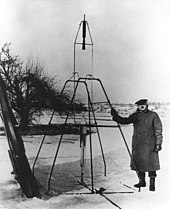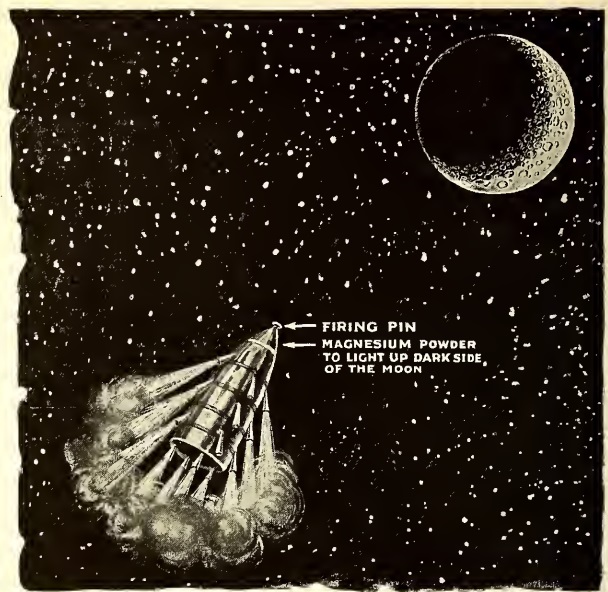
Goddard in 1926. Wikipedia image.
A hundred years ago this month, Electrical Experimenter magazine carried a feature about Prof. Robert Goddard, and his vision of sending a rocket to the moon. Goddard didn’t originally set out to go to the moon, his initial rockets were designed to explore the upper atmosphere of the Earth.
But there was a practical problem–above about 300 miles, there would be no way to prove how high the rocket had flown. With no atmosphere, it wasn’t possible to use an altimeter, the idea of radar hadn’t yet come to the fore, and there was really no practical way for the rocket to send a radio signal back to Earth.
Since a rocket going that high has hit the escape velocity, then it really wasn’t any extra trouble to go all the way to the moon. So Goddard envisioned packing the rocket with a load of magnesium powder, and crashing the craft into the “dark side” of the moon. (And yes, the term “dark” side was used correctly–meaning the part that is dark, even if facing the Earth.) With a sufficient charge, the resulting flash would be plainly visible from the Earth.
It was only 39 years later that the first craft reached the vicinity of the moon, the Soviet Luna 1 in 1959. And it was only a half century later that the first human walked on the surface of the moon.
In 1920, we were half a century away from being able to go to the Moon. Sadly, though, we can say the same thing about our present day. We’re a half century away from a human walking on the moon.

